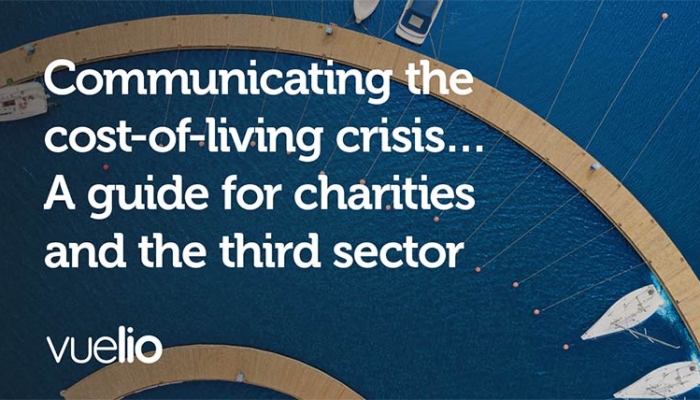6 tips for planning your comms throughout the cost-of-living crisis
The cost-of-living crisis will have impacted the messaging and approach of every comms team, whatever the sector, and is only set to continue in a period of great financial strain for the public and businesses across the UK this winter.
In our new white paper ‘Communicating the cost-of-living crisis… A guide for charities and the third sector’, journalists and comms people working at charities and consumer-facing brands offer their experiences and advice on getting your messaging right for audiences under increasing pressures. Here are six key takeaways to bear in mind when planning your comms over the following months:
1. Give journalists what they need for their story
‘The contacts I prefer working with are the ones who let me know what’s coming up, rather than just add me to a general media list for press releases. Maybe a charity is planning a campaign, report or research study, and it might fit with what I’m working on. If I can’t report it right away, it might help shape a future piece. Advance notice is always good because I don’t usually work on fast turnaround news pieces.’ – Saba Salman, freelance journalist and author.
2. Share specifics – reporting has had to speed up significantly
‘For the TFN website, we won’t need to spend ages pointlessly rewriting an already well-written press release; we want to publish with the minimum of fuss and move on to the next one. ‘Have a strong line, marshal the facts and figures, include quotes and pictures (even a stock picture is helpful). Case studies are always welcome.’ – Graham Martin, editor of Third Force News.
3. Make contacts: the media wants to tell your story
‘Nothing new here – develop contacts. Journalists are over-worked and under resourced and there are not enough of them these days thanks to cuts which have devastated newsrooms. They are waiting to be spoon-fed, so do it. ‘Putting it very simplistically; get your story told effectively and you get the ear of the public and politicians.’ – Graham Martin.
4. Find those who have the power to make change in your sector
‘There are a lot of MPs, so you need to find the two or three who will become your advocates and advisers. Really research their interests and what they can do to help. Make it easy for them with clear messaging and calls to action. Follow and comment on what they do on social media and give them good content to post.’ – Katie Tait, director of PR and public affairs for Maggie’s cancer charity.
5. Ensure the tone of your comms is appropriate for the message and for the times
‘We did a lot of work during our campaign planning to make sure we got our tone-of-voice right. This is something we’re really conscious of – we always strive to make sure the way we’re talking about issues is the way people impacted are talking about them, too.’
We held workshops with our storytellers and ambassadors as well as our front-line staff to find out what people are saying when they come to us for help and also what they really wouldn’t want to hear/read. We took out any jargon or anything that didn’t sound completely natural and then issued a tone-of-voice document across the organisation to make sure everyone was on the same page.’ – Katie Tait.
6. Remember who is at the centre of your campaign
‘Ensure that those your campaign is intended for remain front and centre. Building strong foundations is incredibly key – from there you can diversify the angles you push, move onto national press and then become a part of the conversation on TV and media outlets. ‘Lots of leg-work, a strong message and consistency are the most important ingredients for success.’ – Rosie Macdonald, senior PR strategist at Love Energy Savings.
Download the full white paper ‘Communicating the cost-of-living crisis… A guide for charities and the third sector’ here.
For more on communicating during difficult financial times for the public, watch our webinar with NSPCC, FareShare and Refuge.








Leave a Comment